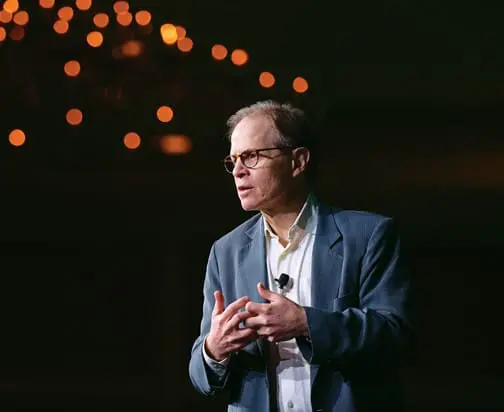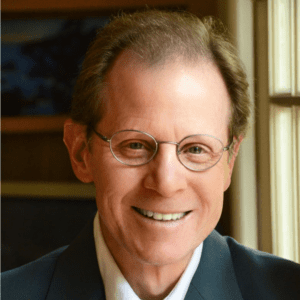Humans have come to a place of incredible influence on life on earth. But even though we could be doing things that are creative, compassionate, and connecting, in too many ways, we’re doing the opposite. Fortunately, the human mind provides a wonderful opportunity to transform the path we’re on. And as mental health professionals, across all our different disciplines, we’re in a position to use our skills and knowledge to push our field to address some of the most pressing issues, like racism, violence, and climate change. But tapping into the mind to effect change on a large level involves helping people understand that the mind is not the same as the brain. The mind is much larger than that: it’s what connects us with everyone and everything on this earth.
We can see this in what the naturalist E. O. Wilson called consilience, which is finding common ground across different disciplines. That’s what we do in the field of interpersonal neurobiology. We look at psychology and psychotherapy, of course. But we also look at anthropology, sociology, biology, chemistry, physics. This consilience framework isn’t a form of therapy, but it informs therapy. It’s systems thinking. It’s asking, for example, how can you go into a classroom and be sure that it’s promoting kindness, compassion, collaboration, and creativity—then looking at the whole school, and then the community, and then the city, and state, nation, and even the planet.
As mental health professionals, we know that the way you change a system is from the inside out. You change a system by changing the minds of the human beings in that system. So, yes, you might work with your clients one on one, or in a group, or in a family—and you might also get out into community to do some work. But that takes a variety of different skills, and it can be intimidating, and you might find yourself saying, “You know, these systems are really big.” Of course, that’s true. But let me give you an example of how we can understand this larger system as being part of what we touch each and every day.
If any of you have spent three days alone in the forest, you know it’s not really alone time—it’s all-one time. Within about six hours, what you find is that the default-mode network of your brain that gives you a sense of an isolated, separate self starts to fragment, and then you suddenly realize who you are is the sky, the trees, the water, the dirt, as well as the body that you’re born into. When you’re out in nature in that way, the illusion of a separate self is rapidly dissolved.
I recently got invited to join 50 religious leaders on a pilgrimage to Pando Populus, a forest in Utah, where there are 47,000 quaking aspen trees. They’re beautiful. But while it appears to be a grove of 47,000 separate trees, each doing its own thing, six inches beneath the surface of the soil is a common rootball. And when the scientists study the DNA of trees at very far ends of this grove, they find it’s identical—it’s one tree. It’s among the largest, heaviest, and oldest living organisms on earth.
The Pando Populus grove is an icon for what we in the field of mental health can do—help people see that despite us having the outward experience of running around in separate bodies, we’re all just manifestations of the same energy. I don’t mean to be poetic or anything; it’s simply science.
And this energy—which is what the mind emerges from and isn’t limited by skull or skin—is best understood as the movement from possibility to actuality. What in the world does that mean? Well, energy can take different forms, like light and sound. There’s chemical energy, electrical energy. It has different contours, locations, intensities, frequencies, and forms. But what these forms all have in common is the movement from possibility to actuality.
Okay, but as mental health practitioners, what does that mean? Well, isn’t our work all about this movement from possibility to actuality? As a therapist, you have the opportunity to direct your clients’ attention to an awareness of the complex systems, not only within the body, but also in the relationality with other people and with the planet. And by looking at energy flow in a complex system, you realize that you can optimize one aspect of a complex system, which is self-organization.
As a scientific foundation for the field of mental health, interpersonal neurobiology is saying it’s not just the practice of therapy you have a responsibility for; through therapy you have a responsibility to take care of the public and the planet. And that can be cultivated in the connections your clients will have once they come to realize that who they are is not just a singular noun.
The body you were born into is a collection of molecules; molecules are condensations of energy. In these big forms, they’re called macrostates. Sure, in macrostates, things are like nouns, entities, and time has a directionality. In macrostates, if you crack an egg, you can’t uncrack it. But when you get to smaller elements, to microstates, which everything is made of anyway, that’s the quantum realm. And in the quantum realm, things aren’t nouns; they’re verbs. Things aren’t entities; they’re events unfolding. There’s no directionality of change; it’s timeless.
One way of accessing this state may be a simple meditative practice called the Wheel of Awareness, in which we’re able to distinguish the metaphoric hub of being aware from the rim of the various knowns, such as our sensations, emotions, or thoughts. Getting feedback from thousands of individuals integrating consciousness with the Wheel suggests that pure awareness—the hub—may actually be how we dip into the macrostate of what we call a “plane of possibility,” which may be the source of consciousness.
In that receptive state, people repeatedly report feeling a sense of joy, love, connection, and timelessness. Like swimming the breaststroke—in which our head is sometimes above in the air realm and sometimes below in the water realm—distinguishing the macrostates, noun-like, seemingly separate stuff of the rim from the macrostates, verb-like emergence of deeply interconnected events in the hub is a skill we can each learn to achieve during the practice, and to incorporate in various ways into our daily life.
We all get lost in nounifying reality and thinking that we’re separate. We think the self is a singular noun instead of a plural verb. But interpersonal neurobiology is helping us to not get lost in us versus them. It’s helping us get out of the macrostate delusion of our separateness and recognize that who we are is a plural verb. It’s that sense of interconnection that you can cultivate in yourself, in your clients, in your community. Like the aspen grove, beneath the surface is the common root ball that’s our interconnection.
Dan Siegel is among the great speakers coming to Anaheim, CA, for the Innovations in Psychotherapy 2023 conference. Learn more here.
PHOTO BY SAM LEVITAN
Dan Siegel
Dan Siegel, MD, is the founder and director of education of the Mindsight Institute and founding codirector of the Mindful Awareness Research Center at UCLA, where he was also coprincipal Investigator of the Center for Culture, Brain and Development and clinical professor of psychiatry at the School of Medicine. An award-winning educator, he’s the author of five New York Times bestsellers and over 15 other books, which have been translated into over 40 languages. As the founding editor of the Norton Professional Series on Interpersonal Neurobiology (IPNB), he’s overseen the publication of over 100 books in the transdisciplinary IPNB framework, which focuses on the mind and mental health. A graduate of Harvard Medical School, Dan completed his postgraduate training at UCLA specializing in pediatrics, and adult, adolescent, and child psychiatry. He was trained in attachment research and narrative analysis through a National Institute of Mental Health research training fellowship focusing on how relationships shape our autobiographical ways of making sense of our lives and influence our development across the lifespan.














